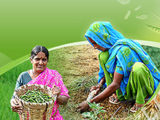Many online image galleries and databases have been created specifically to help identify certain groups of pest insects, beneficial insects, diseases, etc., or to provide a gallery of pests and diseases associated with a specific crop or commodity, such as you would find in a hard copy field guide for a specific crop. The number of databases that are specifically relevant to biosecurity concerns are much more limited.
In the USA, the Center for Invasive Species and Ecosystem Health, based at the University of Georgia, is a collaborative project that allows users to search detailed images of invasive and exotic species of plants, insects, and diseases, as shown in the screen shot.

Apart from images, this site also provides a range of other support material, including invasive species databases, pest detection, etc. The major purpose of this database is to provide images to various government departments and NGOs for outreach programs and for reuse in field guides, outreach websites, educational materials, etc.
A specific node associated with this database has been developed through collaboration with the USDA Identification Technology Program (ITP). Images that are taken for use in specific ITP projects (such as providing illustrations for fact sheets in identification keys or for pest screening aids) are contributed to this node and available to other users, as shown in this screen shot.
As these images are frequently of type specimens and the information from the museum holding the specimen has been added, these images provide a higher level of confidence to users that the identification is correct.

Through this collaboration, ITP also developed a similar database specifically for federal pest identifiers at ports-of-entry. This secured system includes everything from the ITP Node, but it also includes thousands of images of intercepted pests taken by identifiers. This allows identifiers to quickly and easily compare an unknown intercepted pest with validated images to help expedite the movement of cargo when regulated pests are found. allows identifiers to quickly and easily access images of intercepted pests to help expedite the movement of cargo when regulated pests are found.
In Australia, a biosecurity-focussed image library (PaDIL) has been developed – the Pest and Disease Image Library. Hosted by Plant Health Australia, this image library focuses on pest organisms of particular concern to Australian agriculture. A search function allows users to view images of major insect pest groups, plant diseases, and weed seeds [see screen shots below].


In New Zealand, a diagnostic image database website – PHELdi – is being developed by New Zealand Plant Health & Environment Laboratory for supporting biosecurity officers of Pacific Island countries in pest diagnosis. Species records (with downloadable fact sheets) for more than 600 insects of biosecurity importance to New Zealand and the Pacific have been prepared, peer-reviewed and uploaded into PHELdi.
Once the PHELdi database has been published online, these records will be available to the public through the external MPI Biosecurity webpage. It is anticipated that PHELdi will provide a stable and easily accessible repository of scientifically accurate species descriptions that will help biosecurity staff in the Pacific to identify plant pests. The database itself will continue to grow as more records are added and updated by MPI staff.
In addition to these broader image libraries (covering a range of organisms of importance to biosecurity) other important image databases focus on specific taxonomic groups. For instance, the AntWeb image database covers over 16,000 valid species of ants.
